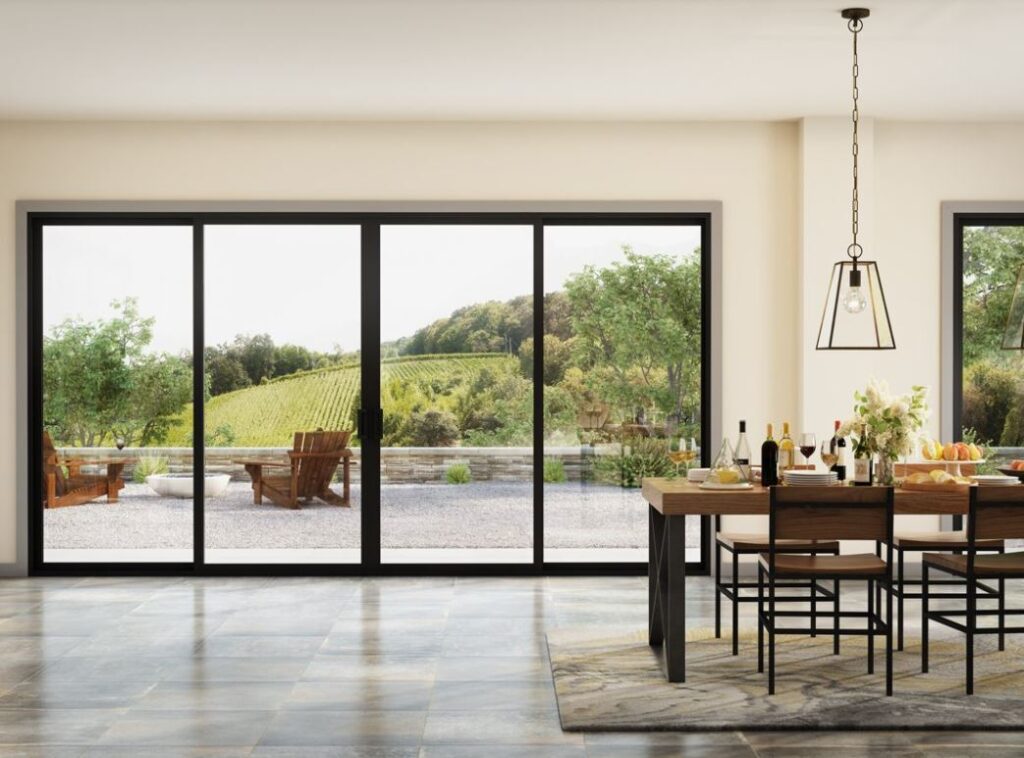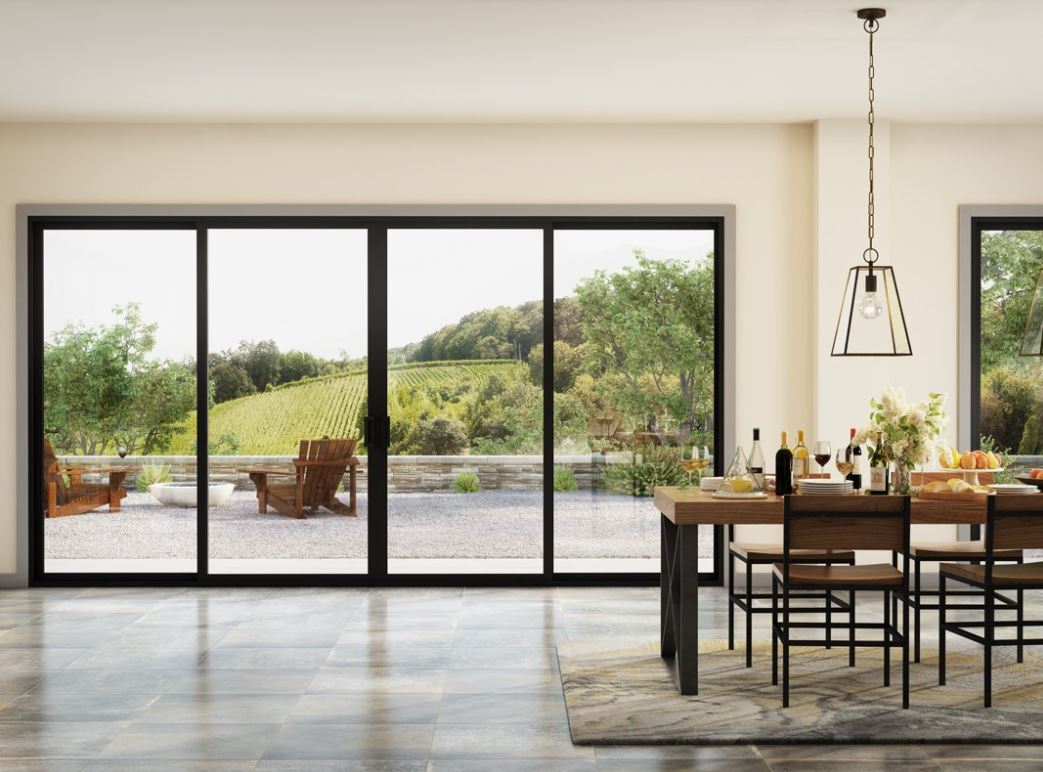
Maximize Your Outdoor Living Space with Sliding Panels for Patio Doors
Transforming your patio into an extension of your indoor living space is a popular home improvement project. One key element in achieving this seamless transition is choosing the right patio door. Among the various options available, sliding panels for patio doors stand out for their functionality, aesthetics, and space-saving design. This article will explore the benefits of sliding panels for patio doors, different types available, factors to consider when choosing them, installation tips, and maintenance advice to help you make an informed decision.
Understanding Sliding Panels for Patio Doors
Sliding panels for patio doors, also known as sliding glass doors, consist of one or more glass panels that slide horizontally along a track. This design allows for a wide opening without requiring the swing space of a traditional hinged door. The panels are typically made of glass, offering unobstructed views of the outdoors and allowing natural light to flood into your home. Sliding patio doors are a popular choice for homeowners looking to enhance their indoor-outdoor living experience.
Benefits of Sliding Panels
- Space-Saving Design: Unlike swinging doors, sliding panels don’t require extra space for operation, making them ideal for smaller patios or decks.
- Natural Light: Large glass panels maximize natural light, brightening up your interior and reducing the need for artificial lighting.
- Unobstructed Views: Sliding glass doors provide panoramic views of your outdoor space, enhancing the connection between your home and the outdoors.
- Easy Operation: Sliding panels are easy to open and close, making them accessible for people of all ages and abilities.
- Energy Efficiency: Modern sliding patio doors come with energy-efficient glass and frames, helping to reduce energy consumption and lower utility bills.
- Enhanced Security: Many sliding doors are equipped with advanced locking systems and impact-resistant glass for added security.
Types of Sliding Panels for Patio Doors
Sliding patio doors come in various configurations and materials to suit different architectural styles and homeowner preferences. Here are some common types:
Standard Sliding Doors
These doors typically consist of two panels, with one panel sliding horizontally past the other. They are a cost-effective and versatile option suitable for most homes.
Multi-Slide Doors
Multi-slide doors feature multiple panels that slide and stack on top of each other, creating a wide opening that seamlessly connects indoor and outdoor spaces. They are ideal for larger patios and decks. [See also: Bi-Fold Patio Doors: A Comprehensive Guide]
Pocket Doors
Pocket doors slide into a recess within the wall, completely disappearing from view when open. This design maximizes the opening and creates a seamless transition between indoor and outdoor areas.
French Sliding Doors
French sliding doors combine the classic look of French doors with the space-saving functionality of sliding doors. They feature wider stiles and rails, mimicking the appearance of traditional French doors.
Materials for Sliding Door Frames
The frame material of your sliding patio door plays a crucial role in its durability, energy efficiency, and aesthetics. Common frame materials include:
Vinyl
Vinyl frames are a popular choice for their affordability, low maintenance, and energy efficiency. They are resistant to rot, corrosion, and pests, making them a durable option for most climates. [See also: Vinyl Window Replacement Guide]
Aluminum
Aluminum frames are strong, lightweight, and corrosion-resistant. They are ideal for large sliding panels and offer a sleek, modern look. However, aluminum is not as energy-efficient as vinyl or wood.
Wood
Wood frames offer a classic, elegant look and excellent insulation. However, they require regular maintenance to prevent rot and insect damage. Wood frames are also more expensive than vinyl or aluminum.
Fiberglass
Fiberglass frames are a durable and energy-efficient option that mimics the look of wood. They are resistant to warping, cracking, and rot, making them a low-maintenance choice.
Factors to Consider When Choosing Sliding Panels
Selecting the right sliding panels for your patio doors involves careful consideration of several factors:
Size and Configuration
Measure the opening of your patio door to determine the appropriate size and configuration of your sliding panels. Consider the number of panels you want and how they will slide and stack.
Glass Type
Choose a glass type that meets your energy efficiency and security needs. Options include:
- Double-Pane Glass: Provides better insulation than single-pane glass, reducing heat transfer and energy consumption.
- Low-E Glass: Coated with a thin, transparent layer that reflects heat, keeping your home cooler in the summer and warmer in the winter.
- Tempered Glass: Stronger and more shatter-resistant than regular glass, enhancing safety and security.
- Laminated Glass: Consists of two or more layers of glass bonded together with a plastic interlayer, providing excellent impact resistance and sound insulation.
Frame Material
Consider the pros and cons of each frame material (vinyl, aluminum, wood, fiberglass) based on your budget, climate, and aesthetic preferences.
Energy Efficiency
Look for sliding patio doors with high energy efficiency ratings, such as Energy Star certification. This will help you save money on energy bills and reduce your carbon footprint. [See also: Energy Efficient Windows: A Guide to Saving Money]
Security Features
Choose sliding doors with robust locking systems, such as multi-point locks and reinforced frames. Consider adding security features like security bars or alarms for added protection.
Aesthetics
Select sliding panels that complement the architectural style of your home and enhance its overall aesthetic appeal. Consider the color, finish, and hardware options available.
Installation Tips for Sliding Panels
Proper installation is crucial for the performance and longevity of your sliding patio doors. While professional installation is recommended, here are some tips if you plan to install them yourself:
- Prepare the Opening: Ensure the opening is square, level, and free of debris. Repair any damage to the framing before installing the door.
- Install the Frame: Carefully install the frame according to the manufacturer’s instructions. Use shims to ensure the frame is plumb and level.
- Install the Panels: Gently slide the panels into the track, making sure they move smoothly. Adjust the rollers as needed to ensure proper alignment.
- Seal the Gaps: Apply weatherstripping and caulk around the frame to seal any gaps and prevent air and water infiltration.
- Test the Operation: Open and close the sliding panels several times to ensure they operate smoothly and lock securely.
Maintenance Tips for Sliding Panels
Regular maintenance will help keep your sliding patio doors in good condition and extend their lifespan. Here are some maintenance tips:
- Clean the Tracks: Regularly clean the tracks with a brush or vacuum to remove dirt, debris, and insects.
- Lubricate the Rollers: Lubricate the rollers with silicone spray or grease to ensure smooth operation.
- Inspect the Weatherstripping: Check the weatherstripping for damage and replace it as needed to maintain a tight seal.
- Clean the Glass: Clean the glass with a mild detergent and water to remove dirt and smudges.
- Inspect the Frame: Inspect the frame for damage and repair any cracks or rot.
Cost Considerations for Sliding Panels
The cost of sliding panels for patio doors can vary depending on the size, material, glass type, and features. Vinyl frames are generally the most affordable, while wood and fiberglass frames are more expensive. Double-pane and low-E glass will also increase the cost. Professional installation can add to the overall expense. It’s important to get multiple quotes and compare prices before making a decision.
Conclusion
Sliding panels for patio doors are an excellent choice for homeowners looking to enhance their outdoor living space. They offer numerous benefits, including space-saving design, natural light, unobstructed views, and energy efficiency. By understanding the different types of sliding doors, materials, and factors to consider, you can choose the perfect sliding panels to transform your patio into a seamless extension of your home. Remember to prioritize proper installation and maintenance to ensure the longevity and performance of your sliding patio doors. Investing in quality sliding panels will not only improve your home’s aesthetics but also increase its value and enjoyment for years to come. Choosing the right sliding panels for patio doors is a significant decision, consider all factors for a great outcome. Enjoy the expanded living space that sliding panels provide. Maximize the functionality of your patio with well-chosen sliding panels. A well-maintained set of sliding panels will serve you well. Consider all options before settling on sliding panels. Enhance your home’s value with new sliding panels.

